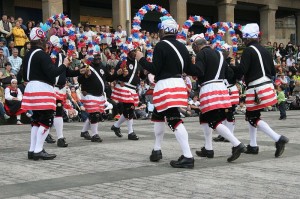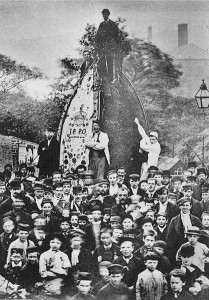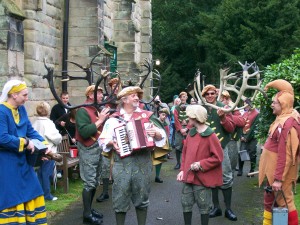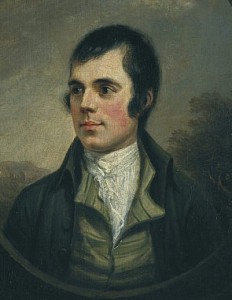The Britannia Coconut Dancers
From the town of Bacup with blackened faces and unusual costumes comes a unique folk dance troup. The team dances several garland dances once common as part of rushbearing festivals around the area, but also a “nut dance” of which they now seem to be the sole surviving example.
Whilst the clogs shirt and britches are traditional Lancashire, the white and red hooped skirt and white hat/turban seem more exotic in origin.
While Morris Dancing is rumoured to have been derived from the dances of the Moors, the African tribe that conquered large parts of Spain, Portugal and Southern France. The tradition danced by the Britannia dancers seems to have a more definite link. It is rumoured to have been taught to Cornish tin miners by Moors who came to this country and found employment in the mines. When the work in Cornwall became scarce during the 18th & 19th centuries some of the Cornish miners came to the North-West to work in the mines and quarries and brought the tradition with them.

Tunstead Mill Nutters 1907

























